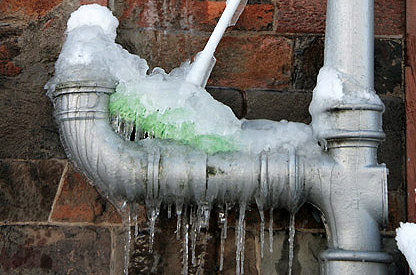Crucial Tips to Avoid Frozen Plumbing in Cold Weather
Crucial Tips to Avoid Frozen Plumbing in Cold Weather
Blog Article
This great article down the page involving How To Avoid Freezing Pipes is totally insightful. Check it out for yourself and decide what you think about it.

Winter can wreak havoc on your pipes, especially by freezing pipelines. Right here's exactly how to avoid it from taking place and what to do if it does.
Introduction
As temperature levels decline, the danger of icy pipelines rises, potentially bring about pricey repair services and water damages. Comprehending just how to prevent icy pipes is essential for home owners in chilly climates.
Understanding Icy Pipelines
What causes pipelines to freeze?
Pipes freeze when exposed to temperature levels listed below 32 ° F (0 ° C) for prolonged periods. As water inside the pipelines ices up, it broadens, putting pressure on the pipeline walls and possibly causing them to rupture.
Dangers and problems
Icy pipes can bring about water supply interruptions, residential property damage, and pricey repairs. Ruptured pipes can flooding homes and trigger extensive architectural damages.
Signs of Frozen Water Lines
Identifying icy pipelines early can prevent them from rupturing.
How to identify frozen pipelines
Seek lowered water circulation from taps, uncommon odors or sounds from pipes, and visible frost on exposed pipelines.
Prevention Tips
Protecting prone pipelines
Wrap pipelines in insulation sleeves or make use of warmth tape to secure them from freezing temperatures. Focus on pipelines in unheated or exterior areas of the home.
Home heating strategies
Maintain interior rooms sufficiently heated, particularly areas with pipes. Open cupboard doors to allow cozy air to distribute around pipelines under sinks.
Safeguarding Outdoor Plumbing
Garden pipes and outdoor taps
Detach and drain pipes garden pipes before winter season. Mount frost-proof spigots or cover outdoor taps with insulated caps.
What to Do If Your Pipelines Freeze
Immediate activities to take
If you presume frozen pipelines, keep faucets open up to ease stress as the ice melts. Utilize a hairdryer or towels taken in hot water to thaw pipes slowly.
Long-Term Solutions
Structural changes
Consider rerouting pipelines away from outside walls or unheated areas. Add added insulation to attics, basements, and crawl spaces.
Updating insulation
Purchase premium insulation for pipes, attics, and wall surfaces. Proper insulation assists keep constant temperature levels and lowers the threat of frozen pipelines.
Verdict
Avoiding icy pipelines needs positive measures and quick feedbacks. By recognizing the reasons, signs, and preventive measures, homeowners can safeguard their pipes throughout winter.
5 Ways to Prevent Frozen Pipes
Drain Outdoor Faucets and Disconnect Hoses
First, close the shut-off valve that controls the flow of water in the pipe to your outdoor faucet. Then, head outside to disconnect and drain your hose and open the outdoor faucet to allow the water to completely drain out of the line. Turn off the faucet when done. Finally, head back to the shut-off valve and drain the remaining water inside the pipe into a bucket or container. Additionally, if you have a home irrigation system, you should consider hiring an expert to clear the system of water each year.
Insulate Pipes
One of the best and most cost-effective methods for preventing frozen water pipes is to wrap your pipes with insulation. This is especially important for areas in your home that aren’t exposed to heat, such as an attic. We suggest using foam sleeves, which can typically be found at your local hardware store.
Keep Heat Running at 65
Your pipes are located inside your walls, and the temperature there is much colder than the rest of the house. To prevent your pipes from freezing, The Insurance Information Institute suggests that you keep your home heated to at least 65 degrees, even when traveling. You may want to invest in smart devices that can keep an eye on the temperature in your home while you’re away.
Leave Water Dripping
Moving water — even a small trickle — can prevent ice from forming inside your pipes. When freezing temps are imminent, start a drip of water from all faucets that serve exposed pipes. Leaving a few faucets running will also help relieve pressure inside the pipes and help prevent a rupture if the water inside freezes.
Open Cupboard Doors
Warm your kitchen and bathroom pipes by opening cupboards and vanities. You should also leave your interior doors ajar to help warm air circulate evenly throughout your home.

As an avid person who reads about How To Avoid Freezing Pipes, I was thinking sharing that piece was worth the trouble. Sharing is good. Helping people is fun. I value your readership.
About This Report this page